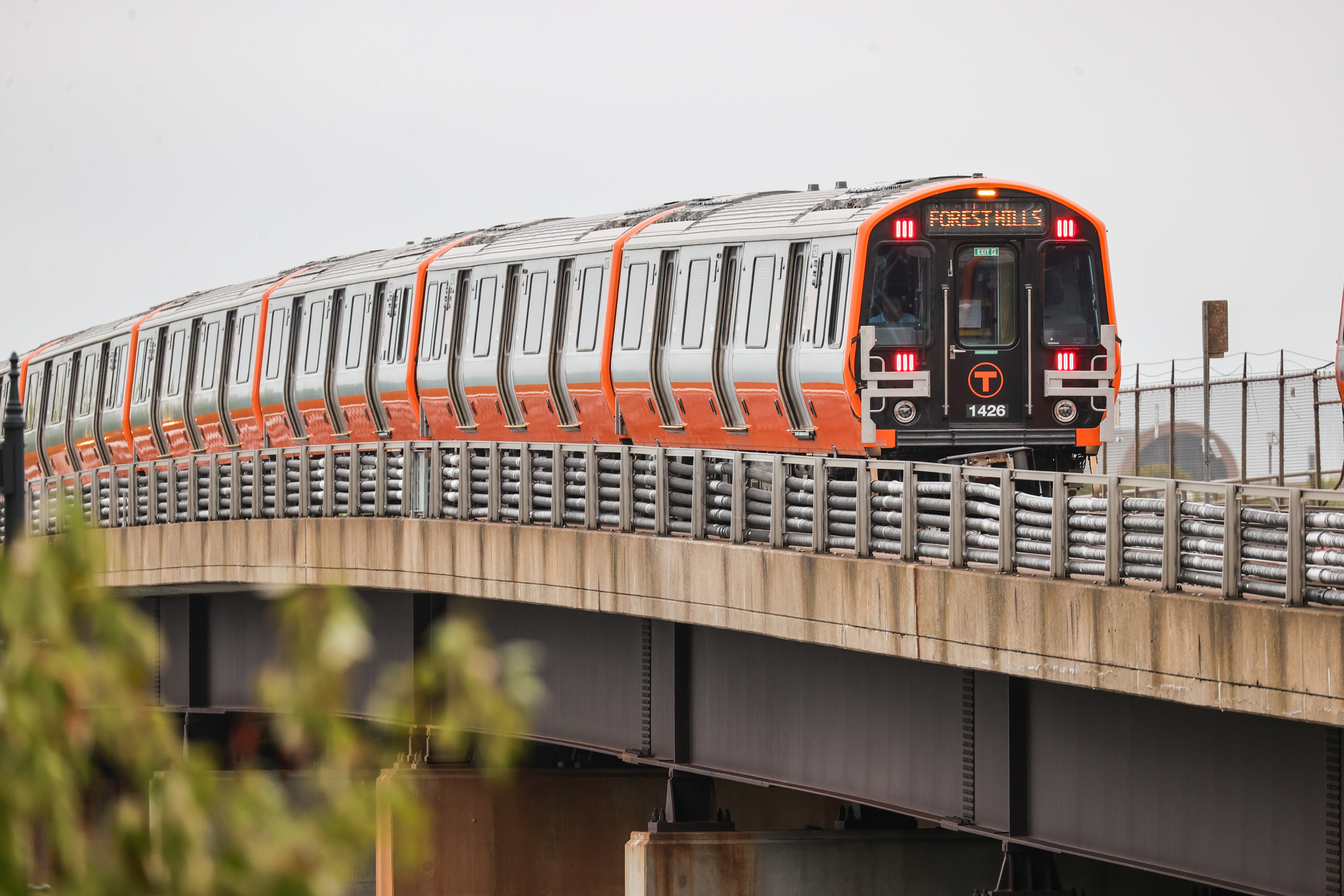Some of the traffic changes put in place by the City of Boston during the Orange Line shutdown to accommodate shuttles and additional traffic will remain in place permanently, city officials announced Tuesday.
That includes permanent changes to Copley Square: a bus lane on Boylston Street from Ring Road to Clarendon Street, which reduces car traffic to one lane.
The MBTA's Orange Line reopened to passenger service Monday, following a 30-day shutdown to address critical maintenance and repair needs.
Get Boston local news, weather forecasts, lifestyle and entertainment stories to your inbox. Sign up for NBC Boston’s newsletters.
During that time, various alternatives were offered to commuters, including shuttle buses and temporarily free Bluebikes. The Boston Transportation Department had to alter streets to accommodate the change in commuting habits, including installing priority bus lanes, pop-up bike lanes and change parking restrictions.
Mayor Michelle Wu and Chief of Streets Jascha Franklin-Hodge said that some of the infrastructure changes that improved traffic flow or public safety will remain in place. Some changes will be temporarily removed and then reinstalled permanently, while other changes made for the Orange Line's closure will be removed entirely.
This is a list provided the City of Boston provided of the street infrastructure changes that will remain in place:
- Chinatown MBTA SL4 bus stop: This newly added bus stop creates a vital link for Chinatown residents to the SL4.
- Copley Square area bus lanes: These bus lanes include Boylston Street (Ring Road to Clarendon Street); Clarendon Street (Boylston Street to Columbus Ave.); St. James Street (west of Berkeley Street to Dartmouth Street). These bus lanes support the 39, 9, and 10 bus routes, which together serve more than 10,000 riders per weekday.
- South End loading zones and drop-off zones: Changes to parking restrictions in this area will remain in place for improved curbside management and reduced double parking in the unprotected bike lane.
- Jamaica Plain pavement marking and signage: This includes traffic safety elements such as “Don’t Block the Box” and parking restrictions at corners to improve visibility. These changes have shown to improve traffic safety and management.
- Boylston Street one-way for vehicles: Closing part of Boylston Street (between Amory & Lamartine) to traffic throughout the shutdown has improved safety (collisions and near-misses) along the Southwest Corridor. Reopening this stretch as a one-way street from Amory to Lamartine for vehicles will support long-term bike connectivity plans, improve safety for all modes, and reduce conflict at the high crash intersection of Boylston and Lamartine Streets.
- Huntington Avenue bus & bike priority lane: The priority bus and bike lane that was added to Huntington Avenue from Brigham Circle to Gainsborough Street has improved speed for the Route 39 bus. As a permanent lane, it will continue to support the thousands of people who ride the Route 39 bus and will improve safety for those on bikes.
- Columbus Avenue pop-up bike lane: This will remain until early December and then be removed for the season. BTD Active Transportation will continue to monitor and move barrels daily to enable street sweeping. Long-term planning is underway for a potential permanent facility. This is one of the busiest corridors for biking. Improving conditions, even on just a few blocks, can make the overall trip safer and more enjoyable.
- Bluebikes parking: The City will retain Bluebikes docks added during the shutdown, with minor modifications as needed, to keep up with record-breaking ridership numbers. The City is also exploring options to provide free or low-cost bike share service.
The Boylston Street pop-up bike lane will be in place through Sept. 26, and the city hopes to get a permanent one in place for the spring.
"Over the last 30 days, our city teams have been focused on measuring what’s working so we could ensure continual improvement during a stressful time of the Orange Line shutdown," Wu said in a statement. "We’re keeping in place some of the changes that have helped with traffic flow and transit access, so that commuters will see lasting benefit above ground even as the subway comes back online. I’m so proud of the Boston Transportation Department for their hard work during this unprecedented event, and grateful to commuters across the region for their patience and input."
The Boston Transportation Department is using the Orange Line shutdown to evaluate potential designs for additional changes, including more protected bike lanes, pedestrian zones and bus lanes.
The announcement drew some criticism Tuesday.
Delivery driver Darce Jeranmaore said the city is making it impossible for workers like him to do their jobs, even writing tickets when they’re parked in the temporary parking lanes displaced by the pop-up bike lanes and bus lanes.
"There's no way to make that happen, it doesn’t make any sense like that. This traffic is getting stuck like 24 hours right now," he said.



